Rick Abath's Story
Related:
"A Historical Examination of the Gardner Museum
Heist’s Basement Crime Scene"pdf
Rick Abath News Story Links
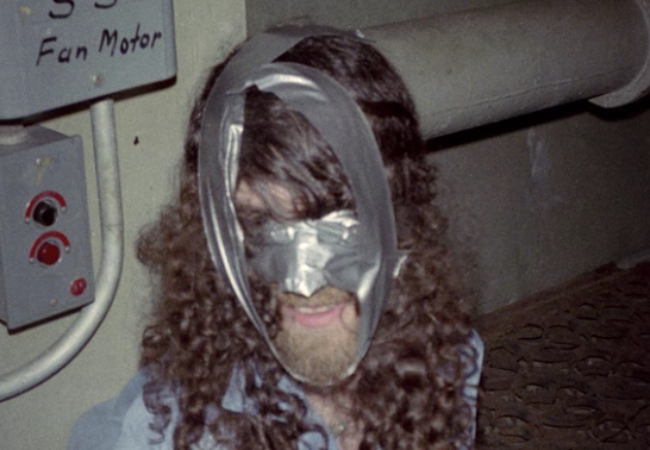
The Many Inconsistencies in Rick Abath's Story
When it comes to the Gardner Museum robbery, it sometimes seems like the guard who let the thieves in, Rick Abath,
is the only one who can keep his story straight.
Maybe it's the way he keeps saying he was handcuffed to an electrical box for seven hours when everyone else,
who has ever had a say in the matter, tells a different story, and then another one.
But then, his public statements on the case have been few and infrequent, the first was not until 15 years after the heist, and the inconsistencies in his story are quite glaring and in some cases significant.

Most recently, in March of 2019, Abath posted a third version of the first chapter of his book on the case, which he has been sharing with the press and or posting online since 2013. Whether he has gotten past the first chapter, or ever will, remains to be seen.
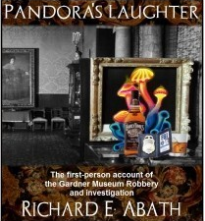
In the latest version, a bit of a prequel with no new references to the Gardner heist from previous versions, Abath says that he was an art student for two semesters at the Maryland Institute of Art, in Baltimore, before heading up to Boston to attend Berklee School of Music.
Of his first impression of working at the Gardner Museum he writes that, "being surrounded by so many masterpieces was both humbling and inspiring. I'd never create a piece of art on par with the works I now guarded, but they sure made me want to try." So rockin' and rollin' and whatnot Abath, even as a musician, still considered himself something of a visual artist too. In fact he has continued his interest in the visual arts, as a form of political and self-expression, on social media, posting hundreds of his creations, mostly on political themes and issues on Facebook.

It could be taken as inconsistent or at least an odd disconnect, for someone who claims he was "handcuffed and duck (sic) taped to an electrical box in the basement for about 7 hours," as he is depicted in the above right crime scene photo, to make the creation on the above left, which he posted on Facebook in 2016.
The book cover illustration for the new first chapter of this work-in-progress is very likely a Rick Abath effort as well. The short (so far) narrative represents "The first-person account of the Gardner Museum Robbery and investigation," according to a cover prominently featuring psilocybin mushrooms, in the frame of the of Vermeer's "The Concert," along with an FBI badge, a bottle of Jack Daniels, and other oddities populating the English 18th century writing table in front of the now empty Vermeer frame, in the Museum Dutch Room.
Since on the night of the robbery, Abath said he showed up for work completely sober, it is hard to know how these drugs and alcohol may have contributed to the robbery, or what point he is trying to make.
Strangely, by his own account, Abath was unable to bring his talents, training and strong interest in the visual arts to bear in working with the Boston police sketch artist, to render much of a likeness of either of the two thieves in 1990.Over a decade later in 2005, Abath said that one of the thieves looked like Colonel Klink from the television show Hogan's Heroes, and in 2014 he said one looked like William Merlino , an associate of David Turner and the nephew and criminal associate of Carmello Merlino.
But after working up the police sketches, shortly after the robbery Abath said to CNN 23 years later: "I remember at the time thinking, there's no way they're going to catch these people from this."
Abath himself buzzed open a second glass door, which kept the thieves or any visitors from entering directly. The small alcove, nicknamed the "the man trap," was designed specifically for the purpose of allowing security to get a good look at who was seeking entry in a controlled environment. "A visitor would come in through the first door and then would be inside a small foyer. where if you're sitting at the security desk there's a big window and you could see that person...and then you would have to buzz them in again," a former guard explained on Empty Frames Season 1 Episode 7. Abath then spoke with the thieves across a long chest-high desk in the well-lit security station for two or three minutes until, he claims, his eyes were covered with duct tape.
Abath has described the Gardner Museum robbery as "the most traumatic event of my life," but despite the trauma of the robbery, of being held captive in the basement, the questioning by Boston Police and then the FBI, Abath still managed that day to drive a hundred miles in a borrowed van, so he could attend a Grateful Dead concert for the umpteenth time, this one in Hartford, CT. It began less than 12 hours after he was discovered handcuffed and duct taped in the basement of the Gardner Museum.
Abath had a good long look at the thieves, in the "man trap," and inside the security station for an extended period, well before he knew about any threat to himself or the museum, according to his own version of events:"There they stood, "two of Boston's finest waving at me through the glass. Hats, coats, badges, they looked like cops," Abath wrote in an earlier account of the robbery, which he shared with the Boston Globe in 2013, "I buzzed them into the museum."
There is a strange, recurring pattern in Abath's explanation of how he was supposedly taken in by the fake "cops." He delivers a brief list of police uniform accessories and then declares: They looked like cops.
Yet, he has never said publicly or written: "I thought they were cops, or believed they were cops. Abath also has adopted the practice of calling the thieves cops, never thieves, or robbers. On Story Corps in 2015 he said: "But that night two cops rang the doorbell. They had hats, badges. They looked like cops, and I let them in."
To date, Abath has never referred to the thieves as fake cops or crooks or thieves in interviews or his writings, typically calling them "cops."
In a broadcast 2013 CNN interview, for example, Abath stated: "Cops rang the doorbell, and they said, Boston police, we got a report of a disturbance on the premises, so I buzzed them in." Also in 2013 Abath told the Boston Globe: "I know I wasn't supposed to let strangers into the museum after hours, but no one told me what to do if the police showed up saying they were there to investigate a disturbance."They were not cops, however, as everyone knows, and his account directly contradicts the statement he gave to actual police the following day. According to the Boston Police report: "The victim states that after gaining entry the suspects told the victim they were responding to a call for the kids outside the building." Boston Police report (page 2 of 3).
In his 1990 version of what happened to the Boston Police, Abath was not told about a disturbance until after the robbers were already inside and that the disturbance was on the street, not on the premises.
The man who trained Abath for his job working the night shift, Jon-Paul Kroger, "insists that Abath had been told specifically to be skeptical of anyone who sought entry into the museum after hours, even if they identified themselves as police officers. In fact, in such events, the night watchmen were trained to take down the names and badge numbers and phone Boston police headquarters to confirm that the officers had actually been dispatched to the museum."
Abath "knew he wasn't supposed to let anybody in, but he thought that maybe some kids might have jumped over the back iron fence and gotten into the yard and there is a nursery back there for Mrs. Gardner's plants and he was worried about that," Master Thieves author Steve Kurkjian explained in an interview on WATD in Marshfield, on April 1, 2016.
A former Gardner Museum guard, Geoffrey Rockwell on the Season One Episode 7 of the podcast, Empty Frames, wondered how the police would know about a disturbance in the museum courtyard manned by two guards, before either of the two guards knew about it themselves. The courtyard is only ten yards away from the security desk and if there was disturbance, the guard at the security desk would have heard it. "The only way they would have heard about a disturbance in the courtyard would have been if a security guard had called them, or one of them had pushed this alarm button," he said.
Shortly before Abath replaced the other guard at the security desk, about a half an hour before the thieves informed the guards that they were there to rob the museum, Abath quickly opened and shut the door outside door, on Palace Road, and while he has kept his story consistent as to why he did this, his explanation is contradicted by Gardner staff and the record preserved by the Museum's security system.
Abath claimed that “I did it to make sure for myself that the door was securely locked,” Abath said. “I don’t know what the others did, but I was trained to do it that way.” "I don’t recall when I did it but it was something I did regular. To test the alarm. We’d pop the door open, you know, and let it close."But Paul Kroger, a former security supervisor at the Gardner Museum, who personally trained Abath also challenges Abath's explanation for why he opened the door to the museum twenty minutes before the thieves sought entry. "I don't care what he says — there's no way, Kroger said on Last Seen Podcast "It makes no sense that you would allow yourself to — why in the world would you open that up? There's a camera outside that shows Palace Road. There's no reason in the world why you would ever open that door. Any door!
In a telephone conversation I had with him on May 2, 2022, the former Gardner security supervisor, J. P. Kroger, who trained Gardner heist guard Abath, told me the door Abath opened to make sure it was locked, was indeed supposed to be checked, but he said that the guards were equipped with an electronic "wand" to ensure the door's deadbolt lock was properly secure.
In the 2024 Season Eight episode of the CNN Docuseries, How It Really Happened about the Gardner heist, they report that the video from the previous night "shows that Abath did not open and close the door the way he said he always did." In the latest Chapter One of his unfinished Gardner heist book, which he made public, Abath writes that within the drug infused hippie lifestyle he and his cohorts had embraced that, "we had an unreasonable optimism, and we had integrity. We had a moral code." But in another earlier iteration of his book, which Abath posted on Facebook he described how, even though he was tripping on mushrooms, that after taking over on the midnight shift on Christmas day, he hosted a small party at the Gardner Museum. The gathering included heavy drinking, and spilled gin. A friend of a friend, whom Abath had never met before was permitted inside. While the two stoned and intoxicated guards kept a tenuous hold on lucidity, "my friend Ed showed up just before dawn with someone we didn't know, he wrote," an odd squirrely kid who seemed out of place and nervous. We trusted Ed, but had no idea who the other dude was. They got some mushroom tea with gin and a short tour, the next shift was going to show up soon." When, a few months later, after the Gardner Heist, Abath's boss, Gardner Museum security director Lyle Grindle said to him: "A Christmas Eve party? But why?" Abath wrote that he replied: "'Because we could,' was all I said." There seems to have been some kind of a hole or blind spot in Abath's moral code when it came to the legacy of Mrs. Gardner, one with a billion stakeholders worldwide, a blind spot that has not been improved after three decades. On the 30th anniversary of the Gardner Museum robbery Abath used key elements of the image from the cover of his barely started book, to update his profile pic on Facebook, while again expressing an utter lack of personal responsibility or regret for what happened, or sense of duty in the aftermath.

Rather than staying close by to make himself available to investigators, and keeping a clear mind to recall and retain details of the Gardner heist, Abath, the key eyewitness was responsible for the thieves being in the museum, and who had conversations with them, and could later see one of the thieves when they checked on him because of a space in the duct tape around his eyes, Abath gave the priority traveling out of state to see not one but two Graeful Dead concerts."
This is a far different account than what Kurkjian, provides in his book, Master Thieves. In that work of nonfiction Kurkjian wrote that "Abath did not understand the size of the robbery or what had been stolen until he read the headlines the next morning coming out of his hotel in Hartford. Realizing immediately that he had to be considered an accomplice, and that his leaving the city would raise deeper questions, Abath abandoned any plan he had to stay to see the band’s second performance that night and drove quickly back to Boston [page 60]. Abath claims he has no idea who the thieves are. In 2015 he wrote: "I don't know 'who done it.' I've always tried to leave that up to the professionals. I've never been trying to figure out "who done it." But I have always wondered why they did it. What was their payoff?" But in 2014 Abath posted a picture of himself on his soundcloud page standing between two people who look as much or more like the Gardner robber police sketches than the criminals whose names are put forth as possible suspects, one wearing gold-framed glasses.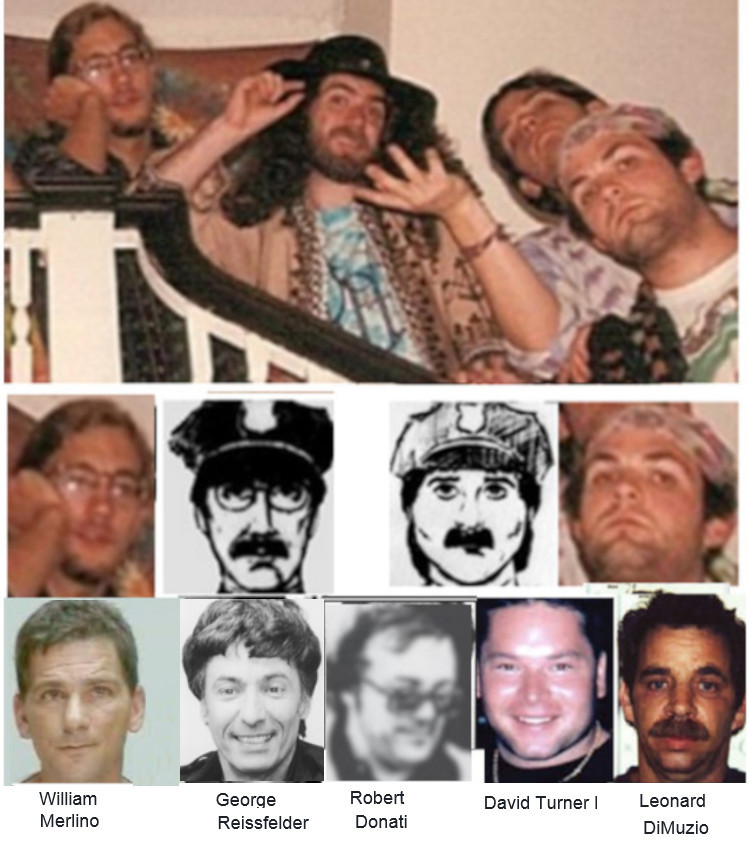 During an interview with CNN Abath said that the mustache of the thief, who was dealing with him was probably fake. But what about the thief's glasses, were they also fake? Abath told CNN: the guy who was dealing with me was kind of taller and skinny and was wearing his gold-framed, like, round glasses, if I remember correctly." So we have Abath's say-so that a thief's glasses were not part of a disguise, but a pair the thief typically wore. But if Abath did not know the thief, he would have said he was wearing gold-framed, like round glasses, not wearing his gold frame like round glasses.
In one of the manuscripts that Abath wrote, which he shared with the Boston Globe, Abath claimed that he had
"passed two lie detector tests right after the crime."
“'I passed your stupid lie detector tests,' Abath reminded them, referring to the two tests he’d passed soon after the robbery in which he was pressed about any involvement in the heist or associations he may have had with the thieves," Kurkjian wrote in Master Thieves, quoting Abath's manuscript, but then went on to report
that "an investigator familiar with Abath’s tests would not comment for this book, but shook his head no when asked whether Abath was describing
the results of his polygraph correctly."
During an interview with CNN Abath said that the mustache of the thief, who was dealing with him was probably fake. But what about the thief's glasses, were they also fake? Abath told CNN: the guy who was dealing with me was kind of taller and skinny and was wearing his gold-framed, like, round glasses, if I remember correctly." So we have Abath's say-so that a thief's glasses were not part of a disguise, but a pair the thief typically wore. But if Abath did not know the thief, he would have said he was wearing gold-framed, like round glasses, not wearing his gold frame like round glasses.
In one of the manuscripts that Abath wrote, which he shared with the Boston Globe, Abath claimed that he had
"passed two lie detector tests right after the crime."
“'I passed your stupid lie detector tests,' Abath reminded them, referring to the two tests he’d passed soon after the robbery in which he was pressed about any involvement in the heist or associations he may have had with the thieves," Kurkjian wrote in Master Thieves, quoting Abath's manuscript, but then went on to report
that "an investigator familiar with Abath’s tests would not comment for this book, but shook his head no when asked whether Abath was describing
the results of his polygraph correctly."
Dan Falzon, who was the FBI's chief investigator, on the Gardner robbery investigation at the outset said that "Abath scored an inconclusive," on his polygraph test accoring to Ulrich Boser in The Gardner Heist.
Former FBI Gardner heist investigator Thomas McShane said there was a Gardner museum employee whose behavior was highly suspicious, who quit his job and who failed a polygraph. though not mentioning Abath by name, Abath did quit, he is someone whose behavior was highly suspicious, and who was one of the very few employees who was administered a polygraph.
In the newest version of the book Abath also writes: "We didn't do or sell coke heroin, or pills. Our use of reefer and hallucinogenics (sic) we saw as your own business. We weren't hurting anyone. But Author Stephen Kurkjian, at a lecture he gave at Southborough Library in 2016 said that Abath changed his story about cocaine use from when he first interviewed him in 2005, when he denied using coke, which Kurkjian termed "a lie," and said that Abath's change in his story influenced his own feelings about Abath's possible involvement in the crime. Nothing about Abath's use of cocaine, the change in Abath's story, or Kurkjian's feelings about the fact that Abath changed his story made its way into Kurkjian's book Master Thieves. Kurjian reported in 2013 for the Boston Globe that "in a 2005 interview with the Globe - under a grant of anonymity - Abath admitted using marijuana and alcohol before work. In the recent interview, he said he sometimes took LSD and cocaine. too." The change in Abath's story, which Kurkjian discussed in a book talk and report about in 2013, was not mentioned in his 2015 book. In the same article it was reported that Abath said "he never had any connection to Turner - and has no recollection of buying cocaine from him," an acknowledgement that he may not even remember everyone he had brough it from.A novel by a former federal prosecutor, James J. McGovern, who worked on the Gardner heist investigation, Artful Deception, features a night security guard who lets thieves into the museum to pay off a cocaine debt.
Further evidence pointing to the possibility that cocaine may have played a role as a motive for some of those involved in the robbery was made public in 2015.
On the night before the Gardner heist, in a surveillance video, Abath's head is visible on tape as the visitor he allowed in three minutes earlier can be seen doing something. And whatever that something is, the portioning out of a small amount of cocaine cannot be eliminated as a possibility, while doing almost anything else can be.
 Abath has also states that he was already able to see even before the thieves had left the building. When one of the thieves
came down to check on him: "Either through sweating or struggling
or both, at some point, the duct tape had slipped down," he told CNN.
"So I could see a little bit over the duct tape, kind of. And at one point, somebody did come and check on me. Somebody was standing at the end looking down at me."
Abath has also states that he was already able to see even before the thieves had left the building. When one of the thieves
came down to check on him: "Either through sweating or struggling
or both, at some point, the duct tape had slipped down," he told CNN.
"So I could see a little bit over the duct tape, kind of. And at one point, somebody did come and check on me. Somebody was standing at the end looking down at me."
But six hours later there was no sign of struggle or of sweat on Abath, when the Boston Police took crime scene photos of him in the basement of the Gardner Museum. The duct tape is consistently smooth and it is hard. In what way Abath's appearance after seven hours would have been different than how he would have looked after seven minutes.
Somehow thieves, who "acted like men who knew their way about a crime scene investigation lab," according to FBI Gardner heist investigator Thomas McShane, were somehow pretty clueless and careless about duct tape. The way the duct wraps under his right ear and in a straight horizontal line beneath his forehead does not indicate a strong effort to ensure that Abath would not be able to see.
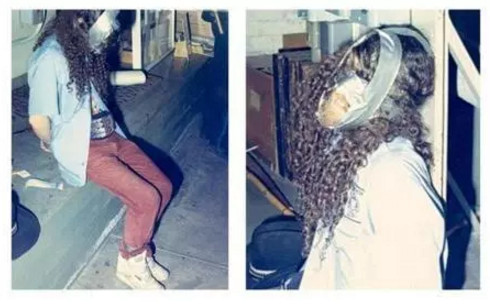
Ulrich Boser in the Gardner Heist that the thieves "trussed Abell [Abath] to a steam pipe," Amore said that Abath was handcuffed to another one of these pipes over here. The fact that after 19, 20, and now 30 years, there is still no consistent account on this point, makes it seem very possible that Abath was not handcuffed to anything, as it appears in the crime scene photos.
What is someone who has "researched the crime, more thoroughly than a lot of people in the press have," as Abath writes he has done, supposed to think?
Abath may be giving away, that he knows more than he lets on, when he writes how "it's easy for a reporter to get hooked on to one train of thought and ride it to its logical conclusion; even if it was a fantasy from the beginning," or why a potential deal with a 1994 ransom note writer "evaporated."
Could this be the year that Rick Abath takes a new direction with the public about what he knows, concerning the Gardner robbery?
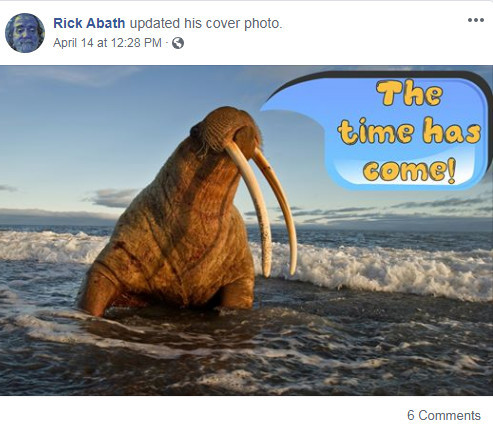
The time has come. He declares from his profile image on Facebook.
But unfortunately, the Walrus is Rick, and after 30 years of jabberwocky, it is it foolish to hope or expect anything else but more of the same from Rick Abath.
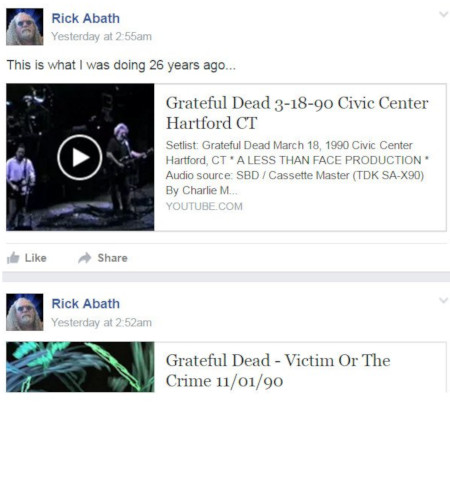
Copyright © 2025 All Rights Reserved kerry@gardnerheist.com
